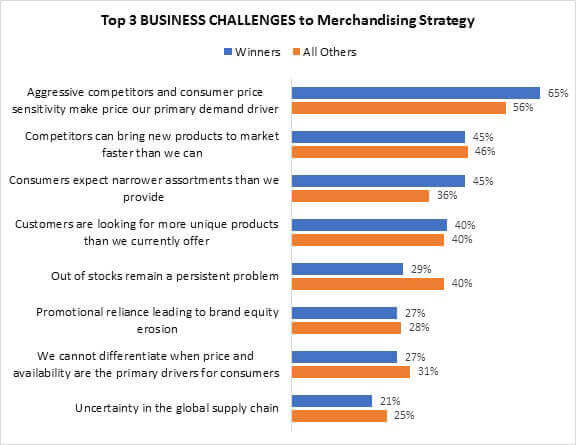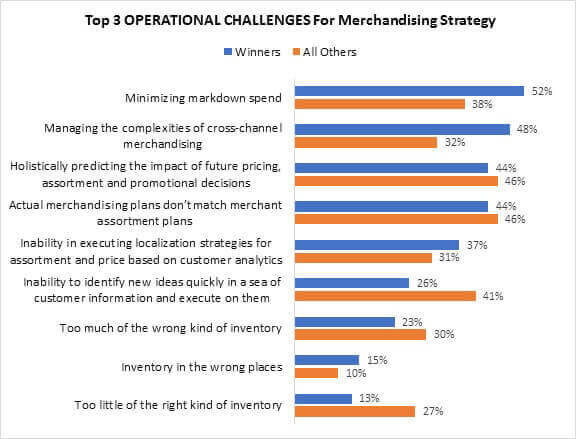Retailers Tell An Encouraging Merchandising Story
In our most recent Merchandising Report, The Real And The Unreal, we quickly learned that retailers who are already performing better than their competitors – sales wise – place a far greater emphasis on merchandising tools and techniques as being very important to their retailing success. Just as importantly, they also make more of an effort to understand the “why ” of these tools, not just the “how “.
But here’s the thing. That’s all fine and good to talk about in the realm of the theoretical, which tends to happen quite a bit in the early stages of a survey. We often times find retailers’ stories to be quite optimistic at the beginning of a survey, but by the time we start asking questions about value vs. use far later in the process, we uncover inconsistencies. They may think all is running smoothly, until we discover big gaps in their supporting individual technologies.
But from what we found this year, this is simply not the case. Take a look just how much more perceived value Winners place on an entire host of modern technological solutions available right now.
Figure 1: Winners Lead The Way

Source: RSR Research, February 2017
These are important differences: Winners are twice as likely to expect big things from demand forecasting, alone. They are nearly twice as likely when pertaining to attribute-based merchandise planning systems, and their interest in virtually every technology we put before them is greater by double-digits across the board. Put simply: they know they can’t get by any longer without more predictive tools at their side.
An interesting point by revenue: the smaller the retailer, the less likely they are to put faith in integrated planning, allocation, and replenishment systems. Only half of retailers with revenue under $50 million annually ascribe high value (not pictured), while nearly 70% of mega retailers ($5B+) say these tools hold the key to future success. This is purely a matter of scale, as many small retailers still believe they have a finger on the pulse of what’s happening within their operations on a day-to-day basis. A cautionary note, however: if a small retailer has aspirations for growth, technology enablement is one of the first priorities to keep in mind. A relevant product offering requires serious intel once a Merchant Prince is asked to put himself in more than one place at one time.
But as stated earlier, while perceived value is important, it is when we see retailers’ use of these technologies that the picture gains even further clarity (Figure 2).
Figure 2: What Now?

Source: RSR Research, February 2017
The “Using and Satisfied ” category of technologies above is informative for the current day, but it is the “Planning a Change “, “Budgeted Project ” and “Planned ” columns that are instructive for the future – particularly the Budgeted Project category. Within, we find that what retailers want most are new assortment optimization tools, as well as planning allocation and replenishment systems. So who wants what most?
- Winners are much more satisfied with their merchandise planning systems than their peers – a whopping 51% (compared to only 17% of everyone else). They have made their major purchases and therefore are not in line to be making them again anytime soon. They are also quite pleased with their in-season demand forecasting tools (56% to everyone else’s 20%).
- However, 26% of average and lagging retailers already have put budget aside for assortment optimization tools, while a quarter of Winners report that while they already have these tools, they are planning a refresh with newer ones. The next 12-18 months look to be a strong time for improvements in retailers’ assortments across the board.
Nearly 1 out of every 3 Retail Winners is also looking to change up the space optimization tools they’ve already come to rely upon. The desire to “be like the Apple Store ” and boutique retail design experiments aside, the message is clearly getting through to many retailers that if you want shoppers to visit you in the physical world, the space you’re inviting them into must be interesting and efficient. It may not need to be “inspiring, ” but it must be well thought out.
When it comes to merchandising, at least, the future is looking bright. Check out the full report here.
